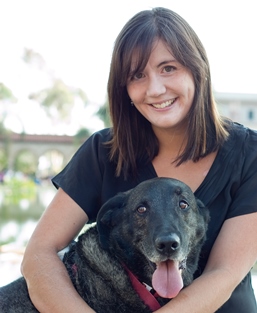Tips for digital & teleradiology
Sarena Sunico, DVM, DACVR
Veterinary Specialty Hospital, San Diego, CA
Posted on 8 July 2016
With more and more veterinary practices transitioning to digital radiography, teleradiology consultations are on the rise. Ease of digital image transmission/submission, and quick turn-around times have greatly facilitated this trend in veterinary medicine. This transition has evolved quickly, and as with all new behaviors, it can be fraught with frustration. Below are some tricks and tips that will help you get the most out of your teleradiology interpretations with fewer calls, emails, and repeat radiographs to follow up your interpretations.
1. Technique and positioning still matter. The switch to digital imaging has given us the gift of exposure latitude. This means that many images will have some ability to display the trunk and the extremities in the same image in a recognizable shade of gray. Unfortunately, this does not change the fact that curling the entire cat onto the imaging plate will NOT produce diagnostic images of the head, neck and extremities when truly aiming for the abdomen. When imaging the limbs and axial skeleton, radiologists still do rely on straight, orthogonal positioning to project anatomy in reliable ways so that abnormalities are evident. If you would like a radiologist to render an opinion on certain regions of interest, please include images centered on those regions of interest with appropriate positioning and exposure!
2. Review your studies before the patient goes home and get any needed extra images before you submit for an interpretation. This will greatly reduce the need for scheduling the patient to come back on the following day for additional radiographs after your interpretation comes back.
If there is something that concerns you on the edge of one of the images, I will probably also be concerned and recommend more images! Consider getting orthogonal radiographs centered over an area of question before submitting for an interpretation and save the cost on the second interpretation and a follow-up radiology appointment.
While radiologists have specialized training in image interpretation, we are not magicians (but thank you for giving us so much credit!). If obliquity and exposure make a region completely uninterpretable to you, the likelihood that we will glean a diagnosis out of it is very low.
3. Consider converting all of your thoracic and at least some or your abdominal studies to three-view studies before submitting them for review. With digital radiography, image acquisition is usually much faster, technician time is reduced, and there is no film to waste. The cost difference between a three-projection study versus a two projection study is negligible. Please consider these scenarios:
When evaluating the lung, three-view thoracic radiographs are the standard for metastasis check.
When lung pathology is unilateral, it is always recommended to include the opposite lateral projection to better project that pathology in well-aerated, non-dependent lung.
When radiographing an acutely vomiting animal, a left lateral projection will frequently move gas into the pyloric outflow tract and highlight the pyloric antrum and duodenum. Many pyloric foreign bodies can be diagnosed with this projection without need for ultrasound! Consider a three-view abdomen any time you are radiographing an animal for vomiting.
4. Histories matter! History and physical exam findings help me rank the importance of radiographic findings and to help me make relevant recommendations. Please consider these scenarios:
History provided: “Lame.” Whole body radiographs on a 12-year-old German Shepherd dog are provided. While finding orthopedic abnormalities on a 12-year-old GSD is not hard, figuring out which one to work up will require your input on the findings from a thorough orthopedic/neurologic evaluation. Any more information you could provide would be helpful! Which leg? Which joint? Chronicity? Fever? Trauma history? Responds to medication?
History provided: “Vomiting.” The 12-year-old cat that has been vomiting once daily and losing weight for the last 3 months is a very different scenario than the 2-year-old cat that has vomited 20 times in the last 6 hours and has a painful abdomen. For the first scenario, a routine ultrasound exam appointment may be recommended, but for the other scenario, an exploratory surgery or an emergency ultrasound exam would be better.
5. Don’t e-mail your images. Take the time to find a teleradiology group that you like and get your hospital set up to submit DICOM images through a dedicated teleradiology platform. Each platform typically has staff that can help you troubleshoot the process of getting set up. This will expedite image submission and report turnaround time. It will also reduce image compression and loss of image quality.
Some of these tips may seem basic, but you would be surprised how many retake/follow-up radiographs or follow-up conversations with your teleradiologist these simple tricks can help eliminate!
About the author
|




